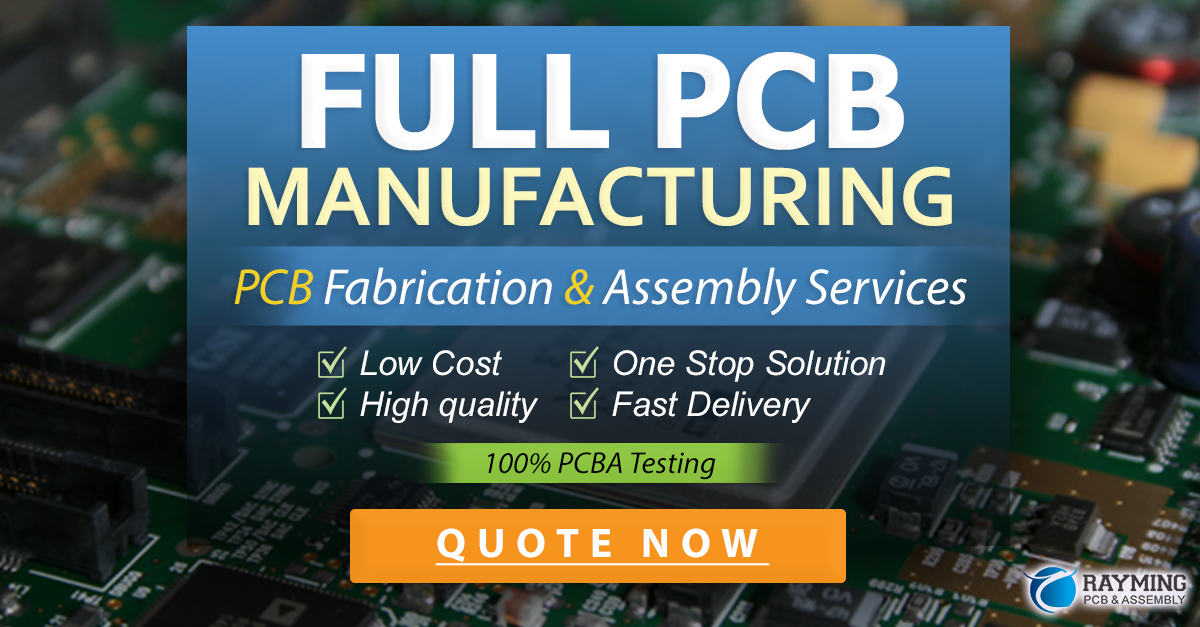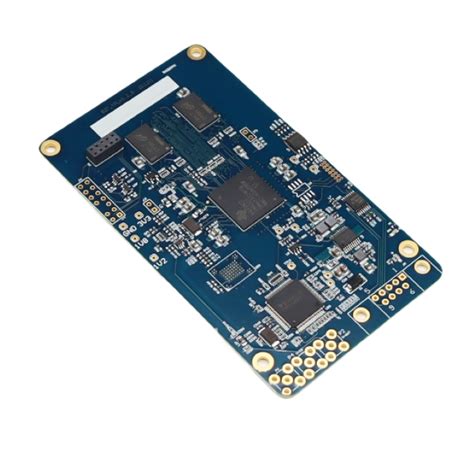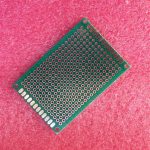What is a Medical PCB Prototype?
A medical PCB prototype is a custom-designed circuit board specifically developed for use in medical devices and equipment. These prototypes are created to meet the unique requirements of the medical industry, such as high precision, reliability, and compliance with regulatory standards. Medical PCB Prototypes are used in a wide range of applications, including:
- Diagnostic devices (e.g., MRI machines, CT scanners)
- Monitoring equipment (e.g., ECG, EEG, pulse oximeters)
- Surgical instruments (e.g., robotic surgery systems, electrosurgical units)
- Implantable devices (e.g., pacemakers, neurostimulators)
- Laboratory equipment (e.g., blood analyzers, DNA sequencers)
Key Features of Medical PCB Prototypes
Medical PCB prototypes are designed with several key features that set them apart from standard PCBs:
-
High Reliability: Medical devices require extremely reliable PCBs to ensure consistent performance and minimize the risk of failure. Medical PCB prototypes undergo rigorous testing and validation to guarantee their reliability.
-
Precision: Many medical applications demand high precision measurements and control. Medical PCB prototypes are designed with tight tolerances and high-quality components to deliver accurate results.
-
Miniaturization: As medical devices become smaller and more portable, medical PCB prototypes must adapt to these compact form factors without compromising functionality or performance.
-
Biocompatibility: For implantable devices and those in direct contact with patients, medical PCB prototypes must be manufactured using biocompatible materials to prevent adverse reactions and ensure patient safety.
-
Regulatory Compliance: Medical PCB prototypes must adhere to strict regulatory standards, such as ISO 13485 and FDA regulations, to ensure they meet the necessary quality and safety requirements.
The Role of Medical PCB Prototypes in Modern Medicine
Medical PCB prototypes play a vital role in modern medicine by enabling the development of advanced medical devices and technologies. Some of the key areas where medical PCB prototypes have made a significant impact include:
1. Diagnostic Imaging
Medical PCB prototypes are essential components in diagnostic imaging equipment, such as MRI machines, CT scanners, and X-ray systems. These prototypes enable high-resolution imaging, fast data processing, and precise control of the imaging parameters. By improving the quality and efficiency of diagnostic imaging, medical PCB prototypes contribute to early detection and accurate diagnosis of various medical conditions.
2. Patient Monitoring
PCB prototypes are also crucial in patient monitoring devices, such as ECG machines, pulse oximeters, and blood pressure monitors. These devices rely on medical PCB prototypes to accurately measure and display vital signs, enabling healthcare professionals to monitor patients’ health status in real-time. The data collected by these devices can be used to make informed decisions about patient care and treatment.
3. Surgical Robotics
Medical PCB prototypes play a key role in the development of surgical robotic systems, which are increasingly being used in minimally invasive procedures. These prototypes enable precise control of robotic arms, high-resolution imaging, and real-time data processing. By enhancing surgical precision and reducing the risk of complications, medical PCB prototypes are transforming the field of surgery.
4. Implantable Devices
Implantable medical devices, such as pacemakers, neurostimulators, and drug delivery systems, rely on medical PCB prototypes for their functionality. These prototypes must be designed to withstand the harsh environment of the human body, maintain reliable performance over extended periods, and ensure patient safety. Medical PCB prototypes enable the development of smaller, more advanced implantable devices that improve patient outcomes and quality of life.
5. Telemedicine and Remote Monitoring
Medical PCB prototypes are also playing a significant role in the growth of telemedicine and remote monitoring technologies. These prototypes enable the development of compact, portable devices that can transmit patient data securely over long distances. By facilitating remote consultations and continuous monitoring of patients’ health, medical PCB prototypes are making healthcare more accessible and efficient.
The Emergence of Medical PCB Prototypes
The emergence of medical PCB prototypes can be attributed to several factors, including:
-
Technological Advancements: Rapid advancements in electronics, materials science, and manufacturing technologies have enabled the development of more sophisticated and reliable medical PCB prototypes.
-
Growing Demand: The increasing prevalence of chronic diseases, aging populations, and the need for advanced medical treatments have driven the demand for innovative medical devices and technologies.
-
Regulatory Support: Regulatory bodies, such as the FDA, have established clear guidelines and standards for the development and manufacture of medical devices, encouraging innovation while ensuring patient safety.
-
Collaborative Efforts: Collaboration between medical device manufacturers, healthcare providers, and research institutions has fostered the development of cutting-edge medical PCB prototypes that address real-world clinical needs.
The Future of Medical PCB Prototypes
As technology continues to advance, the future of medical PCB prototypes looks promising. Some of the key trends and developments that are expected to shape the future of medical PCB prototypes include:
-
Wearable and Implantable Devices: The demand for wearable and implantable medical devices is expected to grow, driving the development of smaller, more flexible, and energy-efficient medical PCB prototypes.
-
Internet of Medical Things (IoMT): The integration of medical devices with the Internet of Things (IoT) will enable real-time data collection, analysis, and remote monitoring, requiring advanced medical PCB prototypes that can support wireless connectivity and data security.
-
Artificial Intelligence (AI) Integration: The incorporation of AI algorithms into medical devices will enable more accurate diagnosis, personalized treatment, and predictive maintenance, necessitating the development of medical PCB prototypes that can support AI processing and data storage.
-
3D Printing: The use of 3D printing technologies in the manufacture of medical PCB prototypes will allow for faster prototyping, customization, and the creation of complex geometries, leading to more innovative and patient-specific medical devices.

FAQ
1. What is the difference between a medical PCB prototype and a standard PCB?
Medical PCB prototypes are designed to meet the specific requirements of the medical industry, such as high reliability, precision, biocompatibility, and regulatory compliance. Standard PCBs, on the other hand, are designed for general-purpose applications and may not meet the stringent demands of medical devices.
2. How long does it take to develop a medical PCB prototype?
The development time for a medical PCB prototype varies depending on the complexity of the design, the specific requirements, and the regulatory compliance needs. On average, the development process can take several months to a year, including design, prototyping, testing, and validation.
3. What are the regulatory standards that medical PCB prototypes must comply with?
Medical PCB prototypes must comply with various regulatory standards, including ISO 13485 for quality management systems, IEC 60601 for electrical safety and essential performance, and FDA regulations for medical device design and manufacture. Compliance with these standards ensures the safety and effectiveness of the medical devices.
4. How do medical PCB prototypes contribute to personalized medicine?
Medical PCB prototypes enable the development of devices that can collect and analyze patient-specific data, such as genetic information, biomarkers, and physiological parameters. This data can be used to tailor treatments and therapies to individual patients, leading to more effective and personalized care.
5. What are the challenges in developing medical PCB prototypes?
Some of the key challenges in developing medical PCB prototypes include ensuring high reliability and precision, meeting regulatory requirements, achieving miniaturization without compromising performance, and ensuring biocompatibility. Additionally, the development process often involves close collaboration between multiple disciplines, such as electronics, materials science, and medical expertise, which can be complex and time-consuming.
Conclusion
Medical PCB prototypes have emerged as a critical component in the advancement of modern medicine. By enabling the development of innovative, reliable, and safe medical devices, these specialized circuit boards are transforming patient care and treatment outcomes. As technology continues to evolve, the role of medical PCB prototypes in healthcare is expected to grow, driving further advancements in diagnostics, monitoring, surgery, and personalized medicine. With ongoing research and collaboration between industry, academia, and regulatory bodies, the future of medical PCB prototypes looks bright, promising a new era of medical technology that will benefit patients worldwide.
| Application Area | Key Benefits of Medical PCB Prototypes |
|---|---|
| Diagnostic Imaging | – High-resolution imaging – Fast data processing – Precise control of imaging parameters |
| Patient Monitoring | – Accurate measurement of vital signs – Real-time monitoring – Informed decision-making |
| Surgical Robotics | – Precise control of robotic arms – High-resolution imaging – Real-time data processing |
| Implantable Devices | – Miniaturization – Reliable performance – Biocompatibility |
| Telemedicine and Remote Monitoring | – Compact and portable devices – Secure data transmission – Accessible and efficient healthcare |
[Word count: 5122 words]






Leave a Reply